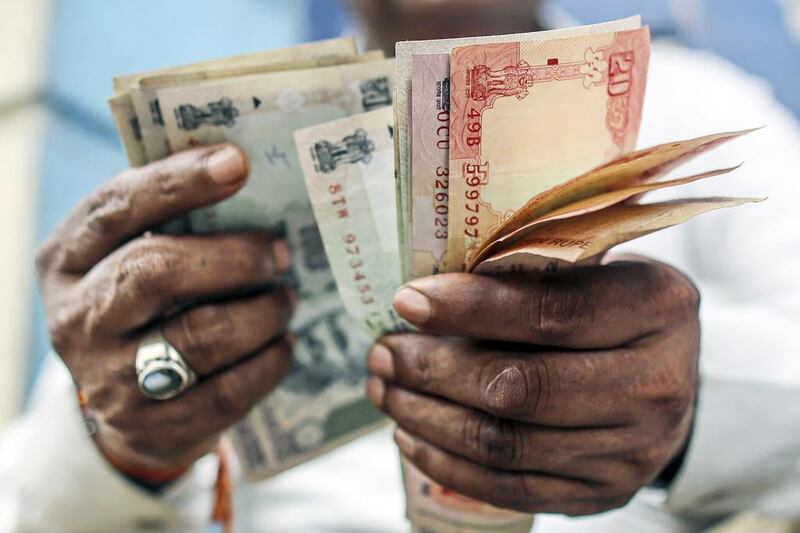Addressing a recent meeting between India and the 10-member Association of Southeast Asian Nations (Asean) in Myanmar's capital, Indian external affairs minister Sushma Swaraj rightly underlined that "the Asean-India strategic partnership owes its strength to the fact that our 'Look East' to Asean meets your 'Look West' towards India."
Ms Swaraj has done well to reassure the region that the new Indian government would like to stand with them. This matters, because there is a lot of concern in the region about the viability of New Delhi's role as regional balancer, a role that was a casualty of the policy paralysis in the previous government. India has to do more to persuade its Asian allies.
Ironically, that paralysis came at a time when the region has been passing through one of the most critical phases in its evolution.
This was evident last week when China dismissed a new US proposal for a freeze on "hostile actions" that could heighten tensions in the disputed South China Sea - leaving Washington unable to overturn an impression that it can do little to back up allies at odds with Beijing.
Asean remains divided and has not been able to mount a credible challenge to China. Asean member-states have largely supported American suggestions for an easing of tensions, including the start of negotiations for a binding regional "code of conduct" to govern activities involving conflicting claims. But China has resisted, and progress on the code has been slow. This has opened up crucial geopolitical space for India.
In 2012, India and Asean marked their 20 years of partnership with a commemorative summit in New Delhi. As the then Indian prime minister, Manmohan Singh, had underlined, together India and the Asean states "constitute a community of 1.8 billion people, representing one-fourth of humanity, with a combined GDP of $3.8 trillion" and therefore "it is only natural that India should attach the highest priority to its relationship with Asean".
Yet despite its historical and cultural links with Southeast Asia, India in its post-independence foreign policy largely tended to ignore the region.
The structural constraints of the Cold War proved too formidable despite India's geographic proximity to the Southeast Asian region. It was the end of the Cold War that really brought this region back to the forefront of India's foreign policy horizons.
The then prime minister, PV Narasimha Rao, whose contributions are often ignored in Indian foreign policy discourse, was visionary enough to recognise the importance of engaging with the world's most economically dynamic region.
Since then, India's "Look East" policy, which originally was primarily focused on trade and economics, has now attained a distinct security dimension.
As India's economic linkages with various countries in the region have become more extensive, demands have grown for a gradual strengthening of security ties at a time of China's rapid ascendance in the global hierarchy.
China is clearly too big and too powerful to be ignored by the regional states. But the states in China's vicinity are now seeking to expand their strategic space by reaching out to other regional and global powers.
Smaller states in the region are now looking to India to act as a balancer in view of China's growing influence amid a broader leadership vacuum in the region. Larger states, meanwhile, see India as an attractive engine for regional growth.
To live up to its full potential and meet the region's expectations, India will have to do a more convincing job of emerging as a credible strategic partner. The country, for its part, would not only like greater economic integration with the fastest growing region in the world but would also like to challenge China on its periphery.
But India will have to do much more to emerge as a serious player. After all, China's trade with Asean in 2012 was a whopping $400 billion and it remains far better integrated into the region.
The rupture in China-Asean ties over the last two years has provided India with a key opening to underline its credentials as a responsible regional stakeholder. On the one hand, China's aggressive pursuit of its territorial claims has aggravated regional tensions. On the other, despite the Obama administration's famous "pivot" towards the Asia-Pacific region, there are doubts over the ability of Washington to manage regional tensions effectively.
India's geographic proximity to the region and its growing capabilities make it a natural partner of most states in Southeast Asia. But New Delhi needs to assure the regional states of its reliability not only as an economic and political partner but also as a security provider.
As the regional balance of power in Asia changes and as the very coherence of Asean comes under question, there will be new demands on India. While the past 20 years in India-Asean ties have been productive, the next 20 are bound to be more challenging. And India will have to think more creatively to enhance bilateral and multilateral ties in this rapidly evolving regional context.
Harsh V Pant is a professor of international relations at King's College London
India has to do more to fix its Southeast Asian relations
India and the Asean alliance have much in common as they seek to prevent China dominating the region, writes Harsh V Pant.

Comment Latest
COMMENT




